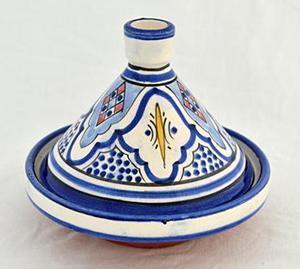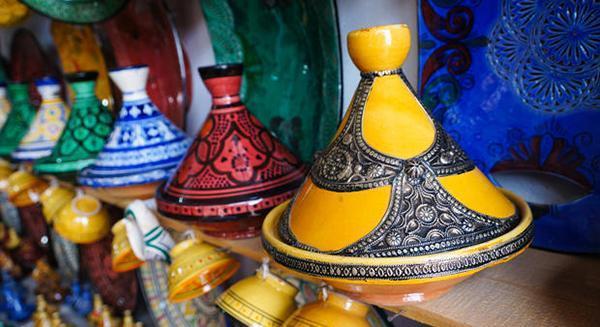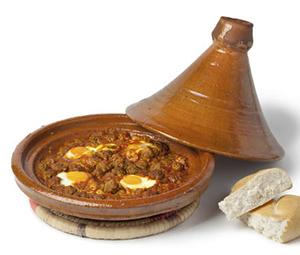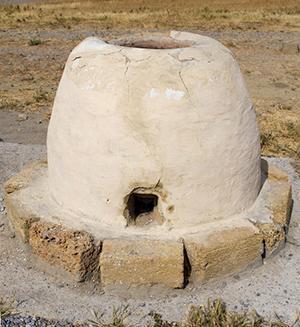Ethnic kitchenware
Post from EditorialsIn some Mediterranean and Eastern countries (Morocco and India) have been developed some cooking utensils and cooking methods simple and natural.
Cook in a simple and natural way with traditional techniques
 In many eastern and Mediterranean countries have consolidated some traditional cooking methods that, even if this requires the use of very simple tools (but functional) and often of a fire flame, however, are very effective, healthy and environmentally sustainable: with some adjustments you can adopt them in the kitchen of your house.
In many eastern and Mediterranean countries have consolidated some traditional cooking methods that, even if this requires the use of very simple tools (but functional) and often of a fire flame, however, are very effective, healthy and environmentally sustainable: with some adjustments you can adopt them in the kitchen of your house.
Also necessary utensils, almost always made from local materials (think for example to the soapstone, which still produce in Valtellina plates and pots for cooking meat or even soups) and perfected form in centuries of experimentation, they are also very decorative, and contribute to increasing tableware and kitchenware like the more sophisticated (and expensive) design objects.
This article will then describe two methods of cooking (and their tools) originating respectively in Morocco and India: the tajine and the tandoori.
How to use a tajine
The tagine, typical of the Maghreb area and especially of Morocco, presents itself as a of conical shape container divided into two parts: the actual cooking vessel, comprising a cylindrical pan with a flat bottom and edges not too high and the lid, in the shape of cone with a small recess on the top. The pan also presents a groove to allow effective closing of the lid.
The traditional material is unglazed clay, but recently have spread also tajine of glazed earthenware or metal, the maintenance is easier and definitely more hygienic. Moreover, being designed to be brought directly to the table, the lid is often richly decorated with geometric or floral patterns. 
The tagine can then cook not only the typical foods of the Arab and North African cuisine (including for example the dish called precisely tajine and consisting of a particular dish stew meat), but also the traditional Italian recipes such as stew .
The main advantage of this system is to require little fat (such as butter or oil), and also not to disperse the aromas of the food during the cooking process: the particular conical shape of the lid is in fact specifically designed not to let evaporate the condensation of cooking fumes, but rather to convey again the food, greatly flavoring it. This operation is indeed more effective simply filling of cold water the appropriate recess on the top of the lid.  It cooks over low heat, and therefore requires more time than necessary with a regular pot or a pressure cooker, because the actual cooking begins only when the tajine has reached a uniform temperature.
It cooks over low heat, and therefore requires more time than necessary with a regular pot or a pressure cooker, because the actual cooking begins only when the tajine has reached a uniform temperature.
The pan base should be prepared by placing in the center the ingredients with longer cooking time, and if necessary by adding a cup of water to maintain the proper level of humidity during the entire process.
The flame must be very low and a baking to perfection is indicated by the leakage of abundant vapors.
To evenly distribute the heat of a common gas stove, it is finally advised to arrive with a metal mesh.
Cooking with the oven and the pot tandoori
 Of much more complicated retrieval is instead tandoori, originating in India (but also used widely in Iran, Turkey, Afghanistan, Pakistan and Armenia): in its original version it consists of a capable jar of clay or a real oven cylindrical and/ or bell-shaped (left), inside of which is kept on a fire of wood or coal.
Of much more complicated retrieval is instead tandoori, originating in India (but also used widely in Iran, Turkey, Afghanistan, Pakistan and Armenia): in its original version it consists of a capable jar of clay or a real oven cylindrical and/ or bell-shaped (left), inside of which is kept on a fire of wood or coal.
When used in a traditional way, the food is then exposed either to fire or to smoke. Furthermore, the temperature reached is very high (about 480°C), and can be easily maintained constant for long periods simply by holding the fire.
It is generally used to cook the dishes of the Indian tradition (such as chicken known just as tandoori chicken) and most flavored breads like tortillas, which are cooked simply sticking them to the inner walls of the upper part of the oven.
In our houses, the original tandoori oven is so used only for outdoor cooking, perhaps along with or instead of a barbecue; while for the use in a normal domestic kitchen you can fall back on a replacement management much easier: the tandoori pot.
It is an unglazed clay pot (or enamel only internally) cylinder-shaped tall and narrow, with a domed lid with a knob on the top: to use, simply place the food inside, carefully close the cover and place it on a high heat (eg fireplace), on the hob of a cooker or simply the normal gas stove.
Maintenance of tajine and tandoori
Being kitchen items of origin and traditional and well-established use for centuries, compared to normal crockery their maintenance requires some special precautions.
First, in the case of tajine and tandoori in simple clay, that is not enameled, cleaning is essential not to use the common dishwashing detergent, because the material is porous, it could not be rinsed and may release harmful substances during subsequent use. You can then wash them thoroughly under running water, rubbing with a brush or scouring pad and neutralize any odors with lemon juice, vinegar or alcohol.
However, to avoid dangerous breakages, before proceeding it is advisable to avoid sudden changes in temperature, using water not too cold and leaving to cool the pot after use.
A modern tagine, ie glazed earthenware or even metal, being waterproof can be washed instead as a common dish, or even placed in the dishwasher choosing a gentle wash.
A tagine newly purchased, before being used for cooking, however, needs a preliminary treatment, necessary in a certain sense to put it up to speed and improve the characteristics.
You can then act in the following way:
- Soak the new tajine (pan and lid) in clean cold water for at least an hour, to run a pre-cleaning;
- Thoroughly rub the inside of the base (ie, the pan) with olive oil;
- Insert it in an oven at a temperature of about 150°C, in order to verify its resistance to heat and the absence of any defects (breakage of the base at the beginning of the cooking might in fact be very unpleasant and dangerous, due to the escape of hot food);
- After it cools, carry out a more thorough cleaning with water and brush.
79163 REGISTERED USERS










